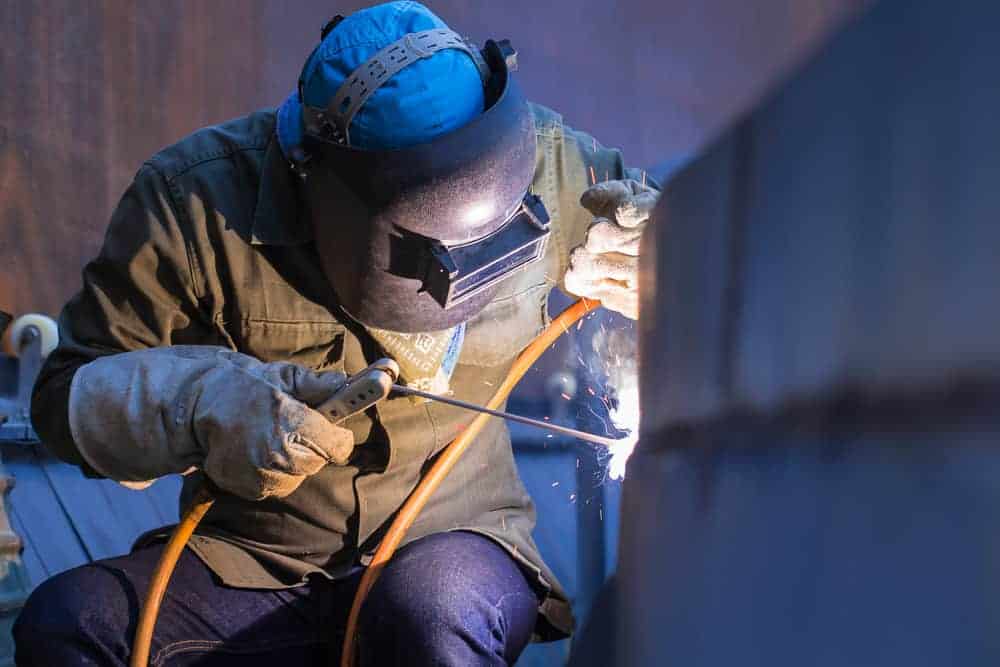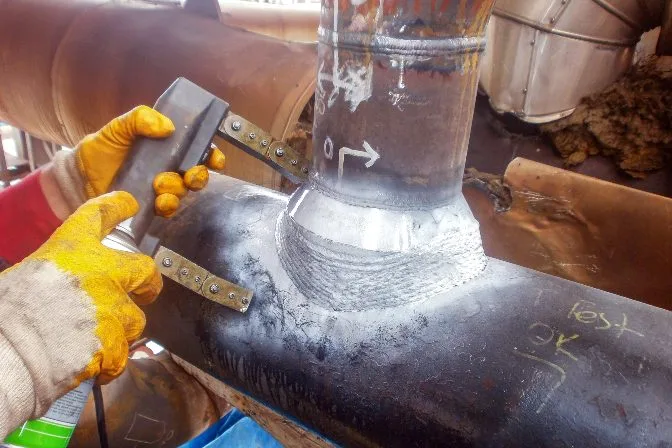Comprehensive Houston Welding Inspection Solutions for Quality Control
Comprehensive Houston Welding Inspection Solutions for Quality Control
Blog Article
A Comprehensive Overview to Recognizing How Welding Assessment Functions: Strategies, Standards, and Finest Practices for Quality Control in Steel Manufacture
Recognizing the complexities of welding assessment is critical for maintaining the integrity of metal fabrication. Various methods, such as visual and ultrasonic screening, play a pivotal role in identifying potential defects, while adherence to established standards guarantees compliance and sturdiness. Implementing best techniques can dramatically improve high quality assurance measures. The landscape of welding assessment is not without its obstacles. What issues occur in the field, and exactly how can these be successfully reduced? Exploring these facets exposes the depth of this essential technique.
Relevance of Welding Assessment
Although welding is an important process in numerous markets, its integrity straight impacts the security and performance of components and frameworks. Effective welding examination is important for recognizing problems that can compromise the top quality and toughness of bonded joints. This process makes certain adherence to established specs and criteria, which are important for keeping architectural integrity and operational integrity.
Welding evaluation offers several functions, consisting of verifying that the welding process has been performed properly, examining the high quality of products used, and confirming that the completed item meets regulatory and market criteria (Houston Welding Inspection). Via rigorous evaluation, prospective problems such as porosity, splits, and insufficient fusion can be discovered early, alleviating and protecting against pricey repairs safety risks
Furthermore, consistent welding assessments foster self-confidence among stakeholders, including engineers, clients, and regulatory bodies, by demonstrating a commitment to quality assurance. The importance of welding evaluation can not be overstated; it is integral not only for conformity with lawful demands however also for enhancing the overall efficiency of bonded frameworks. Inevitably, a robust welding evaluation program is a positive step that safeguards against failings, making certain the long life and dependability of welded elements in their designated applications.
Typical Welding Evaluation Techniques

Visual examination is the initial line of defense, permitting examiners to recognize surface flaws such as cracks, undercuts, or insufficient fusion. Radiographic screening makes use of X-rays or gamma rays to disclose interior imperfections, making it optimal for intricate welds. Ultrasonic testing utilizes high-frequency audio waves to discover subsurface issues, providing exact dimensions of weld integrity.
Magnetic fragment testing works for ferromagnetic materials, highlighting surface area and near-surface gaps when fragments are put on a magnetic field. On the other hand, color penetrant screening uses a fluid dye to expose surface-breaking issues, guaranteeing that also the tiniest imperfections are spotted.
Each method has its limitations and strengths, often requiring a combination of techniques for detailed analysis - Houston Welding Inspection. By using these inspection techniques, quality assurance in metal fabrication is accomplished, making certain that welded structures meet safety and performance standards
Industry Criteria for Welding


The American Welding Culture (AWS) and the American National Criteria Institute (ANSI) are 2 popular organizations that develop welding standards. AWS D1.1, for instance, describes the requirements for welding steel frameworks, while AWS D1.2 concentrates on light weight aluminum. Globally, the ISO 3834 standard addresses high quality requirements for blend welding, giving a framework applicable throughout nationwide borders.
Finest Practices for Top Quality Guarantee
Quality guarantee in welding is extremely important to accomplishing long lasting and safe building and constructions. Developing a thorough top quality administration system (QMS) customized to the details welding task is vital.
Normal training and qualification of welding personnel are essential for preserving a competent labor force. Constant education on the most recent welding strategies and innovations guarantees that assessors and welders are educated regarding existing criteria and methods.
In addition, performing pre-weld evaluations to evaluate materials and tools can stop defects before they take place. Houston Welding Inspection. During the welding procedure, real-time monitoring and paperwork of welding parameters aid recognize incongruities immediately. Post-weld examinations ought to entail comprehensive exams using non-destructive testing (NDT) approaches to ensure the stability of the welds
In addition, maintaining clear communication among employee promotes a culture of high click over here now quality. Normal audits and reviews of the welding process assistance recognize locations for improvement. By adhering to these finest techniques, organizations can achieve ideal quality control, ultimately resulting in improved security and efficiency in steel fabrication projects.
Challenges in Welding Inspection
Although welding examination is crucial for guaranteeing structural stability, this article it provides a range of difficulties that can make complex the evaluation process. One considerable difficulty is the variability in welding techniques and products made use of, which can influence the uniformity of weld high quality. Various welders may utilize varying methods, leading to discrepancies that inspectors need to identify and review.
Another challenge involves the detection of flaws. Non-destructive testing (NDT) approaches, such as ultrasonic and radiographic screening, can be intricate and need competent specialists to interpret outcomes properly. False positives or downsides can happen, potentially causing expensive rework or compromised safety and security.
In addition, the existence of environmental variables, such as temperature and humidity, can affect the integrity of welds and the performance of assessment methods. Assessors have to likewise browse the regulative landscape, guaranteeing conformity with market standards, which can differ by jurisdiction and application.
Final Thought
To conclude, welding examination plays a crucial role in making sure the integrity and safety and security of metal manufacture. Utilizing a selection of evaluation strategies, adhering to well-known industry requirements, and implementing efficient top quality administration techniques collectively improve the reliability of welded frameworks. Despite the difficulties encountered in the evaluation procedure, a dedication to continuous enhancement and adherence to ideal practices can substantially strengthen the high quality guarantee structure, fostering greater confidence amongst stakeholders in the welding sector.
Effective welding assessment is crucial for identifying problems that might endanger the quality and sturdiness why not look here of bonded joints.In addition, consistent welding inspections foster confidence among stakeholders, including designers, customers, and governing bodies, by showing a dedication to top quality guarantee.The American Welding Culture (AWS) and the American National Standards Institute (ANSI) are two popular organizations that establish welding requirements. Throughout the welding procedure, real-time surveillance and documents of welding parameters aid recognize disparities instantly. In spite of the difficulties encountered in the assessment process, a dedication to constant enhancement and adherence to finest methods can substantially boost the high quality assurance framework, fostering better self-confidence amongst stakeholders in the welding market.
Report this page